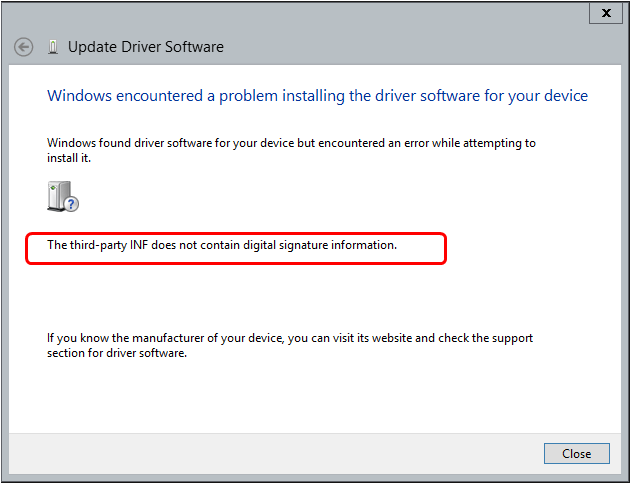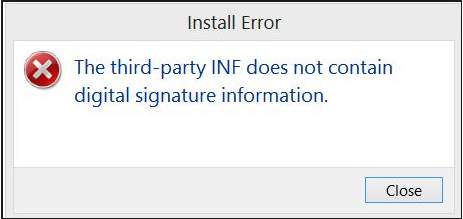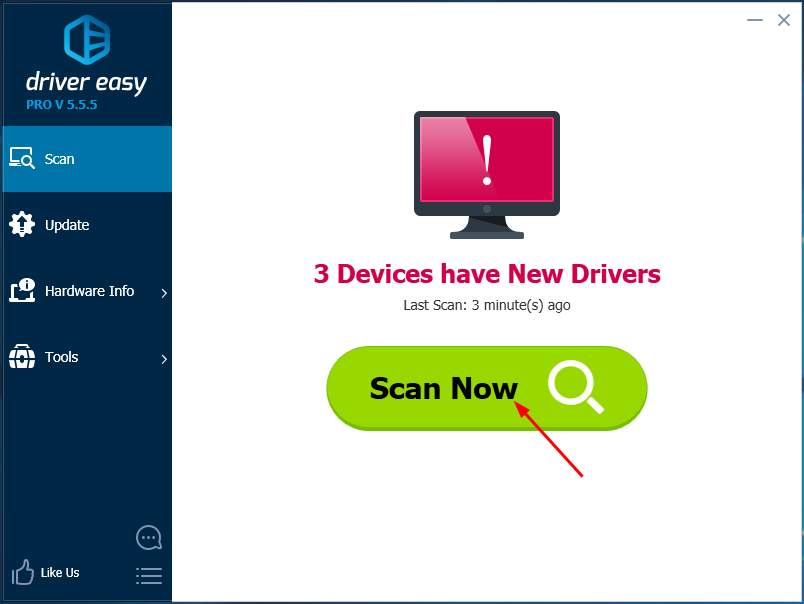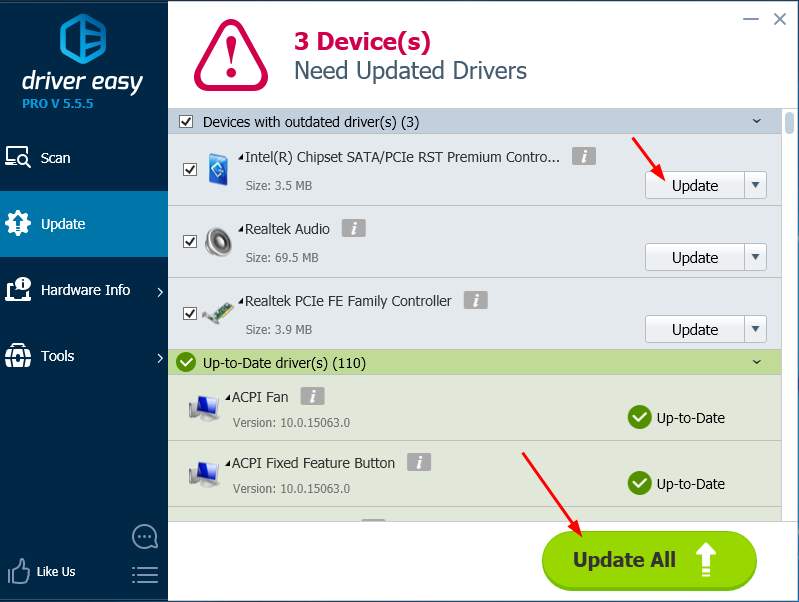

What is an INF file and why it should contain digital signature information?
An INF file is a text file to supply the driver setup information for your Windows to install the driver. It comes with the driver file you download. If you’re using Windows 10 or 8, the INF file should contain digital signature information extra. That’s due to the “driver signature enforcement” security feature in these Windows. This feature requires the drivers you install should be signed by Microsoft. So if the driver your Windows try to install is old unsigned or inofficial, Windows 10 or 8 can’t load it, then you would receive the error above.How to solve the problem to install my driver successfully?
As we know, we should install the driver signed by Microsoft on Windows 8, 10. Then what kind of driver is signed by Microsoft? That would be those downloaded from the device manufacturers’ website and some trustworthy driver tool. So you can go with the following methods to download the correct drivers. Method 1: Download the driver from manufacturer’s website manually Method 2: Download the driver automatically by Driver Easy [RECOMMENDED]Method 1: Download the driver from manufacturer’s website manually
You can download the correct driver signed by Microsoft from your device manufacturer’s website like AMD, Intel, Realtek. Or if you’re using a brand computer, you can download the driver from your computer manufacturer’s website. 1) Go to the manufacturer’s website. 2) Find the specific driver download page, it’s usually under the Support section. 3) You will be asked to enter your device model. 4) Download the driver file from the result and then double-click the file to install on your Windows.Method 2: Download the driver automatically by Driver Easy
If you’re not confident with updating drivers manually, let Driver Easy help you do it automatically. With its help, you can say goodbye to driver headache and delays forever. Driver Easy will automatically recognize your system and find the correct drivers for it. The drivers supplied by Driver Easy are all from the official manufacturer’s website, so you can totally trust it. You can update your drivers automatically with either the FREE or the Pro version of Driver Easy. But with the Pro version it takes just 2 clicks (and you get full support and a 30-day money back guarantee): 1) Download and install Driver Easy. 2) Run Driver Easy and click the Scan Now button. Driver Easy will then scan your computer and detect any problem drivers.

2
2 people found this helpful
0 Comments
Most Voted





